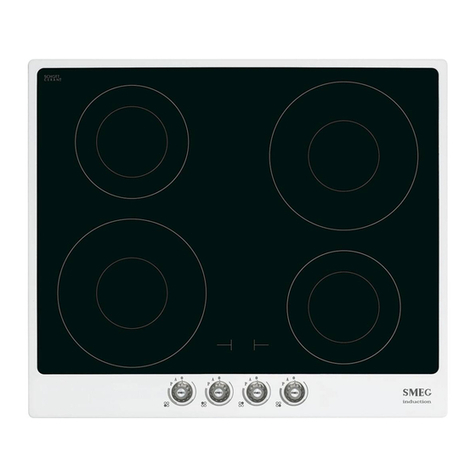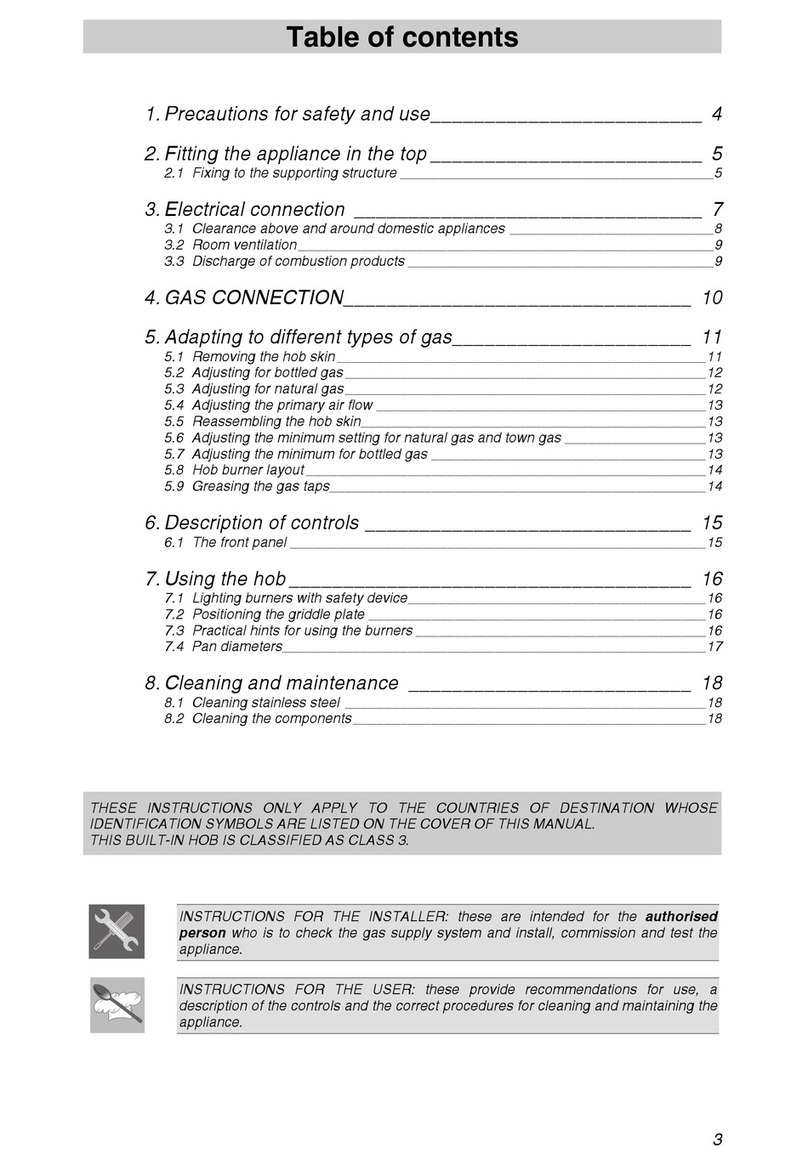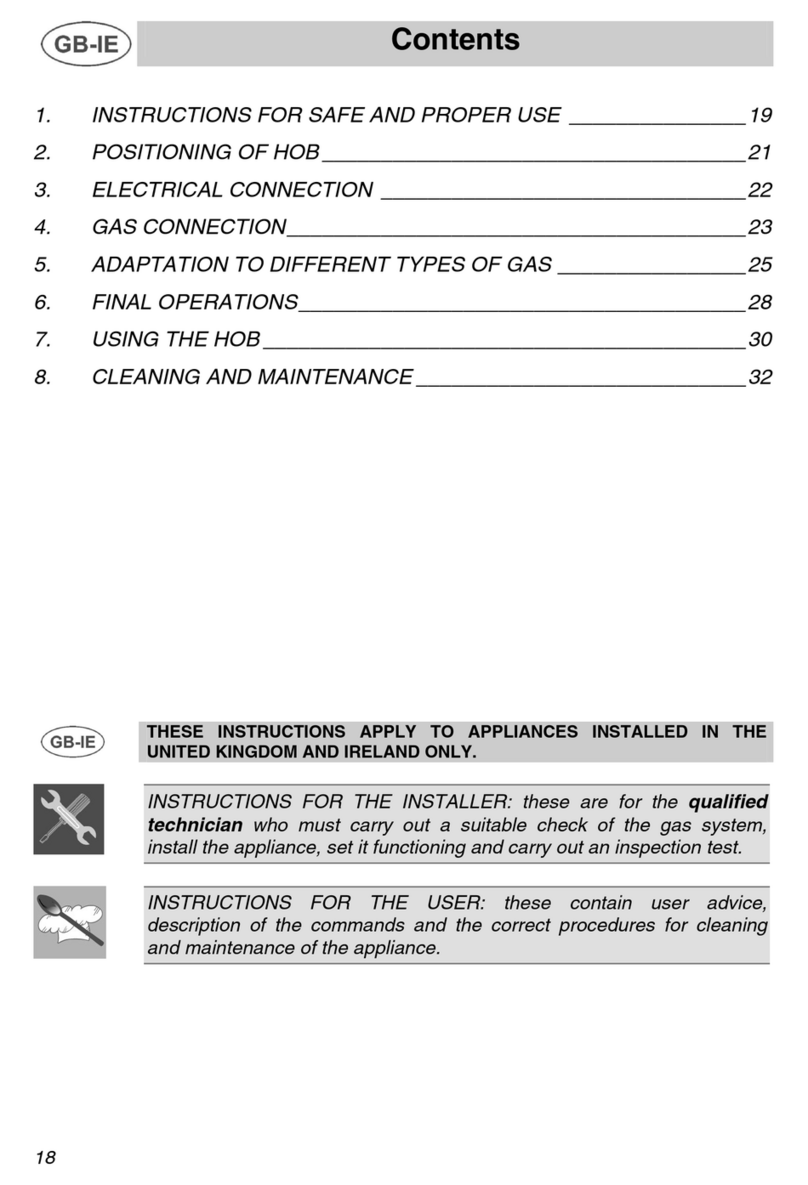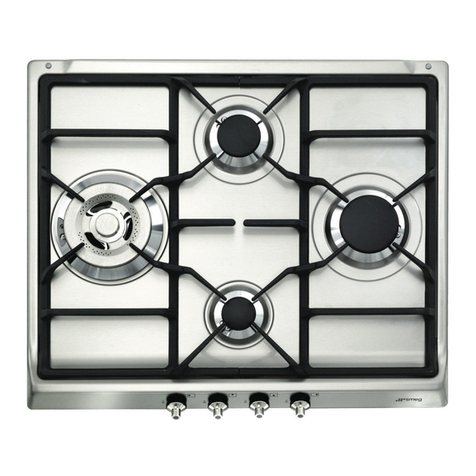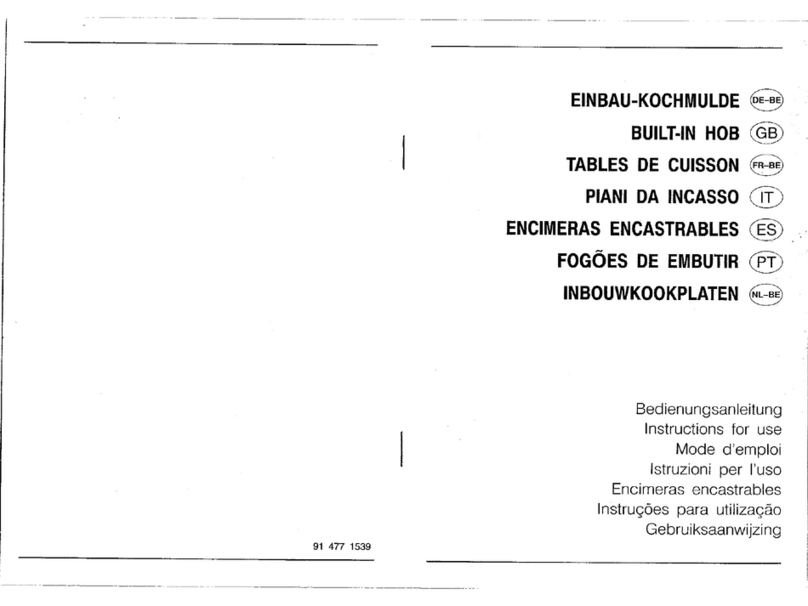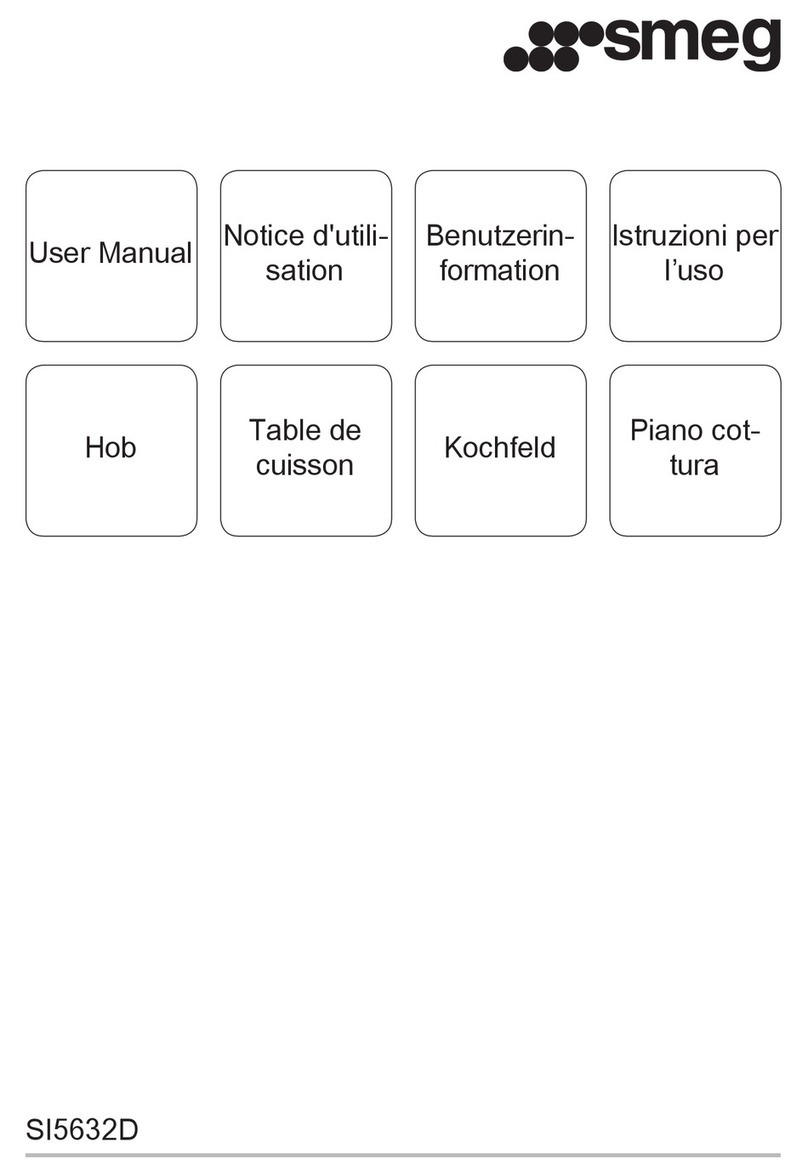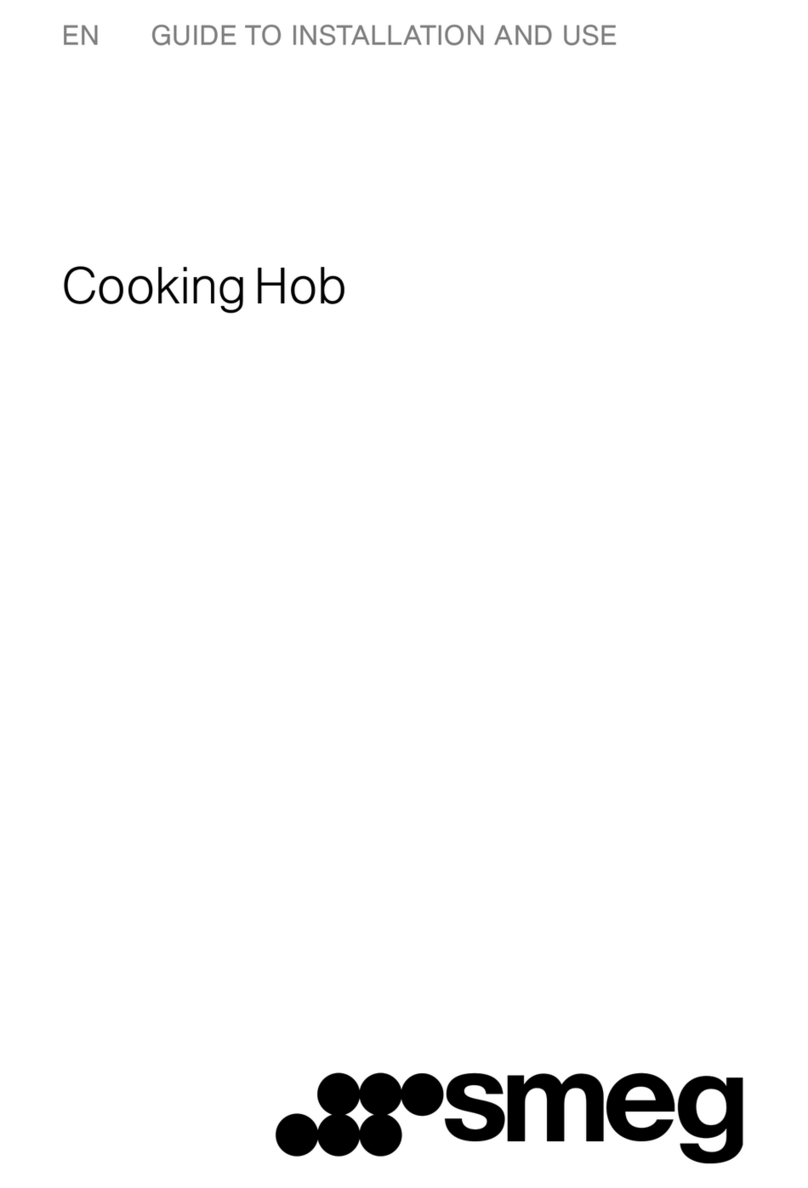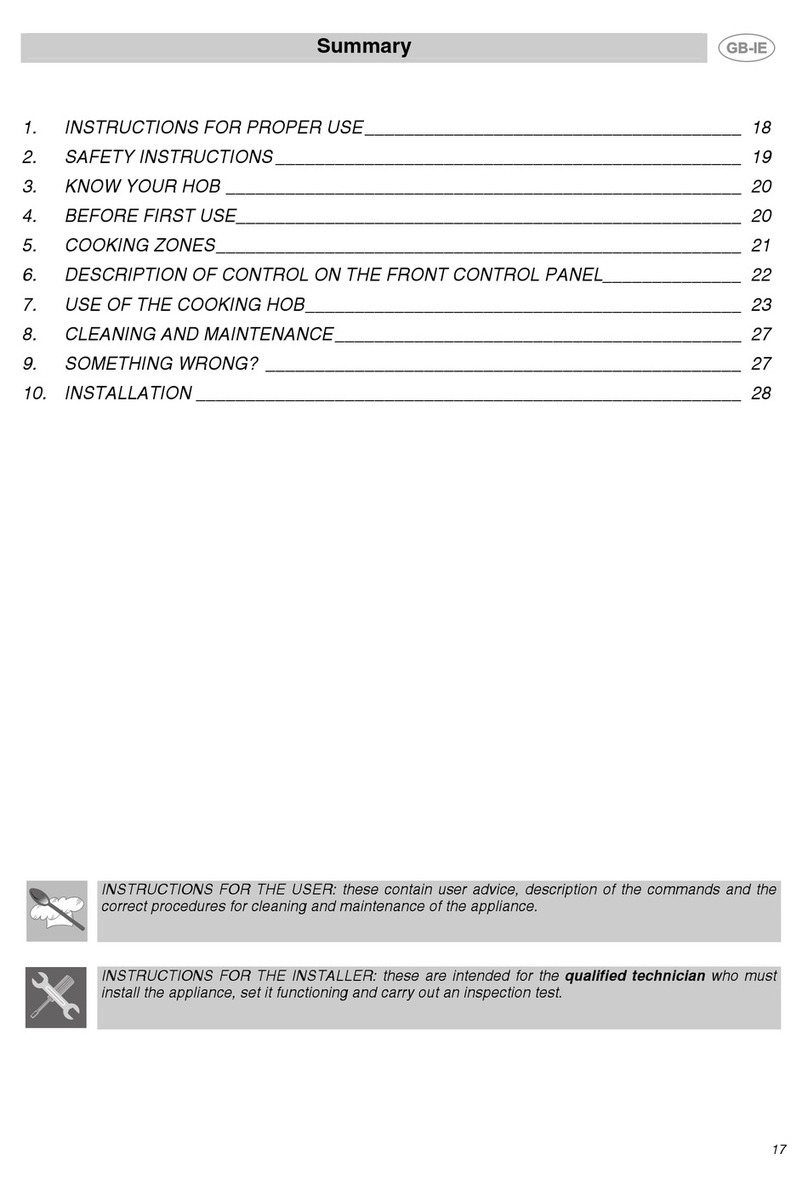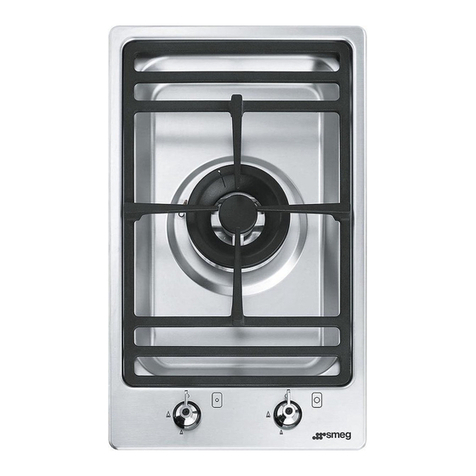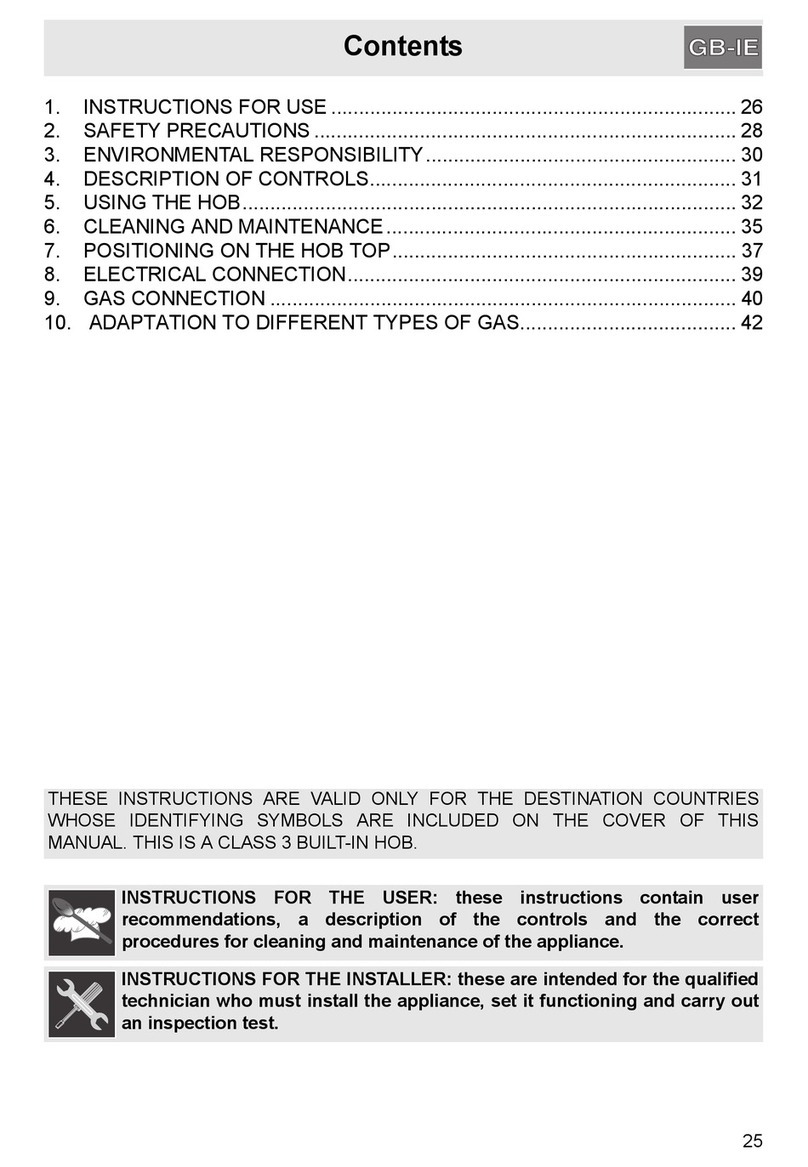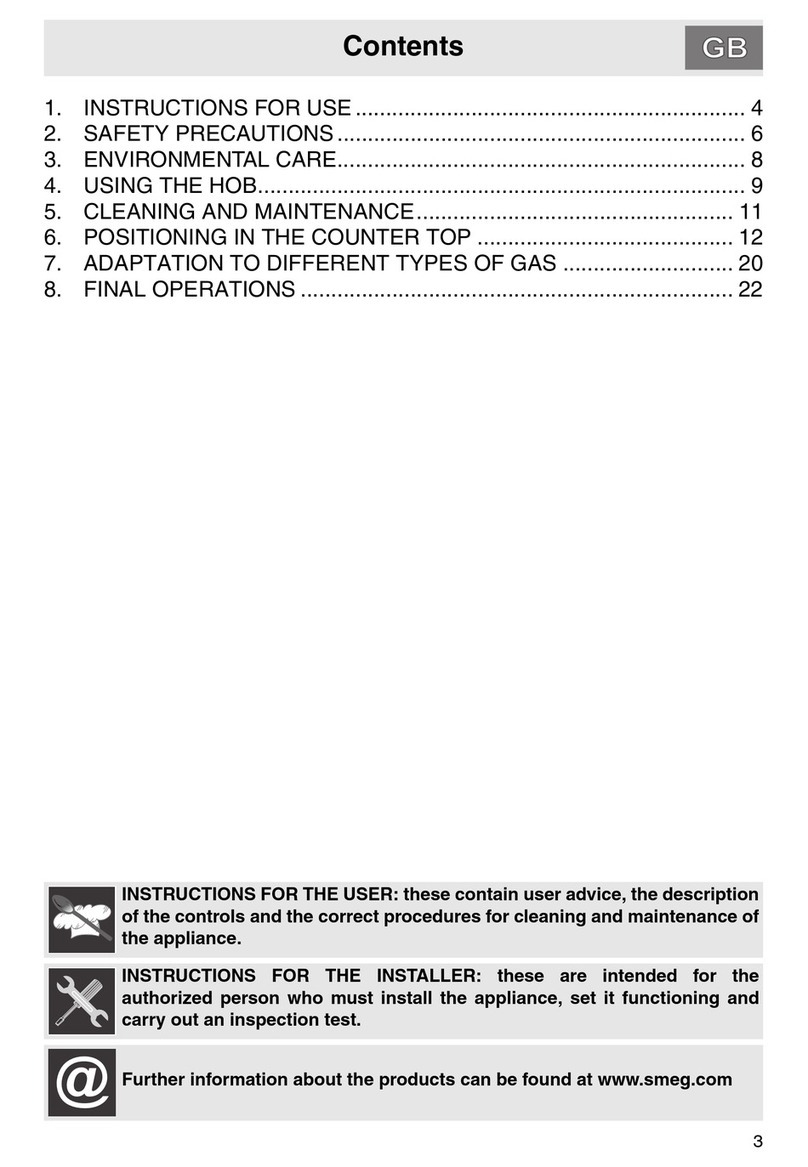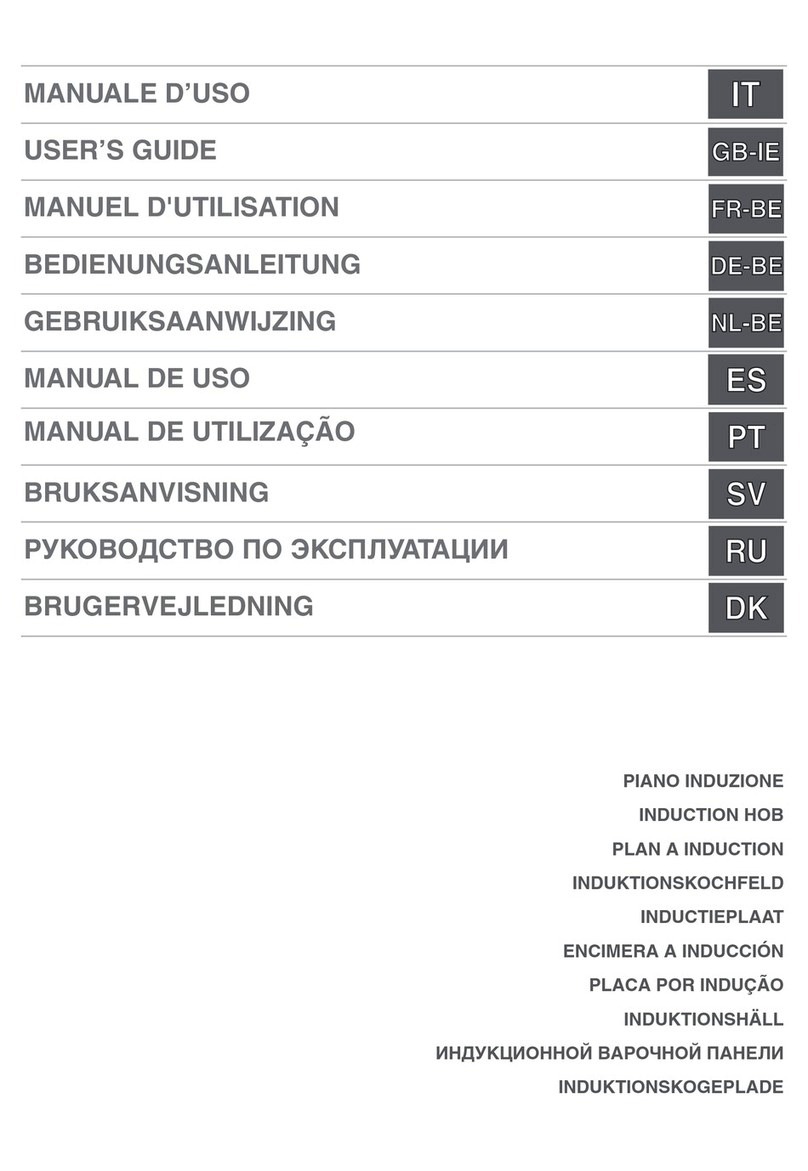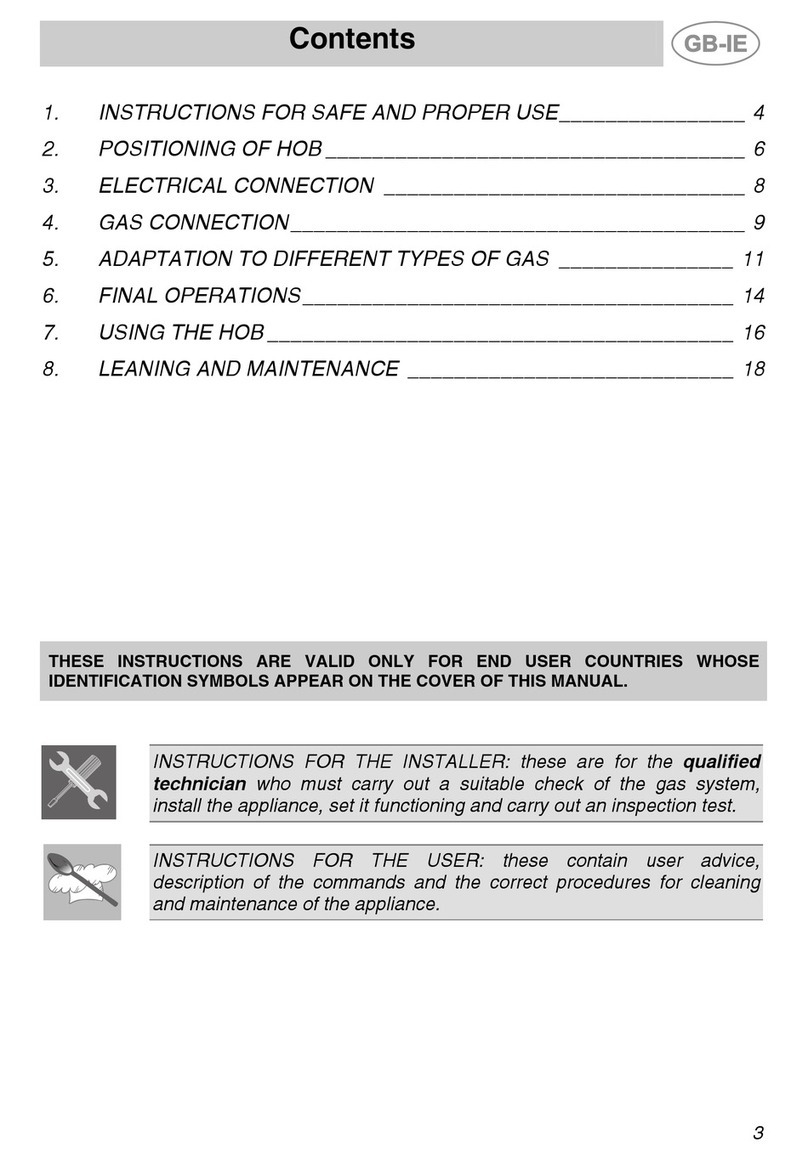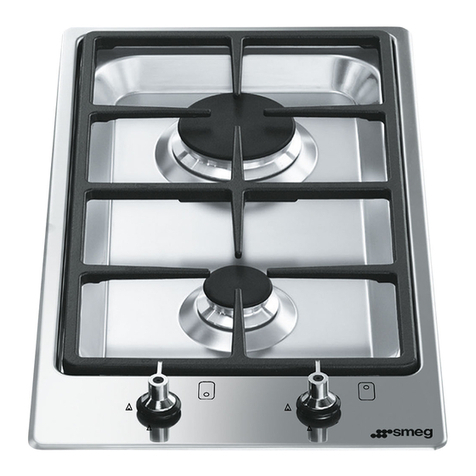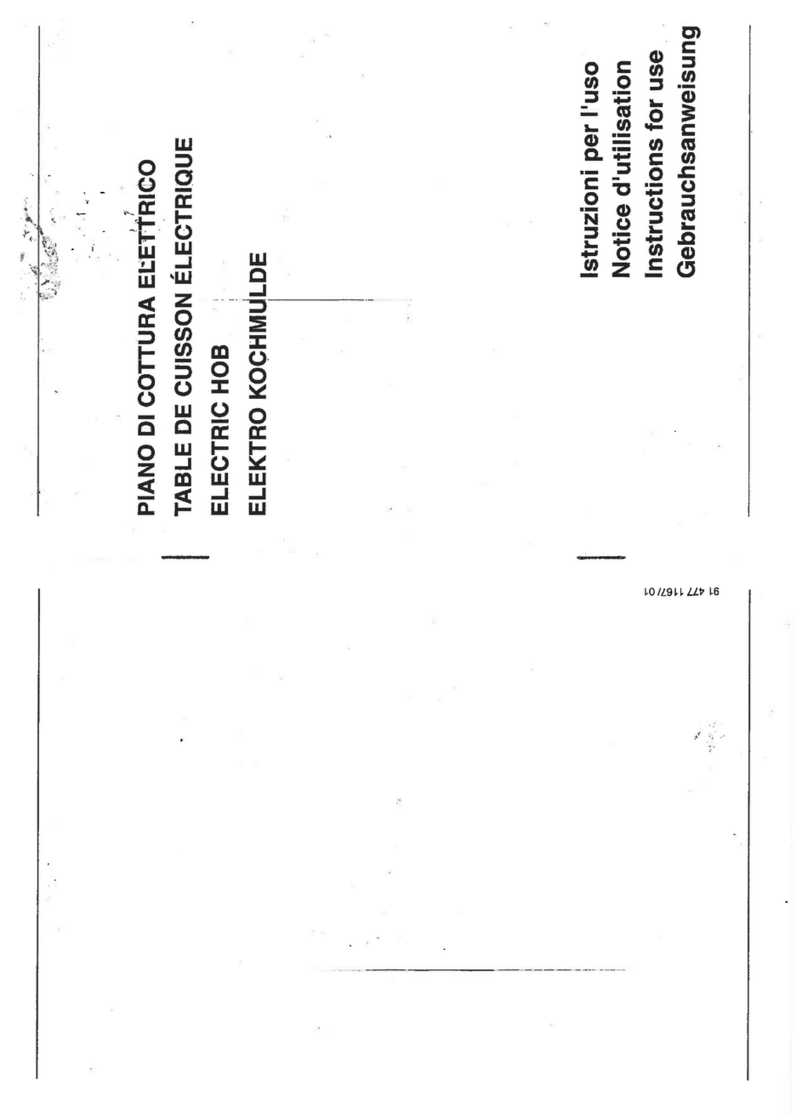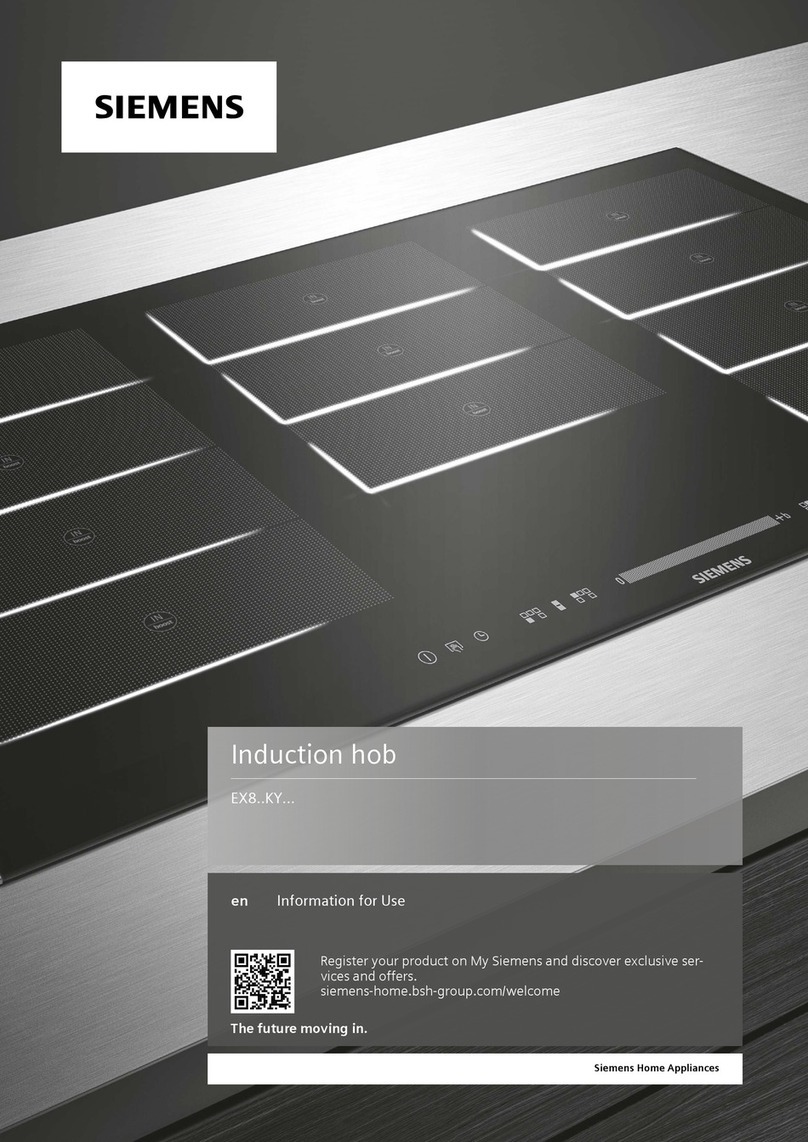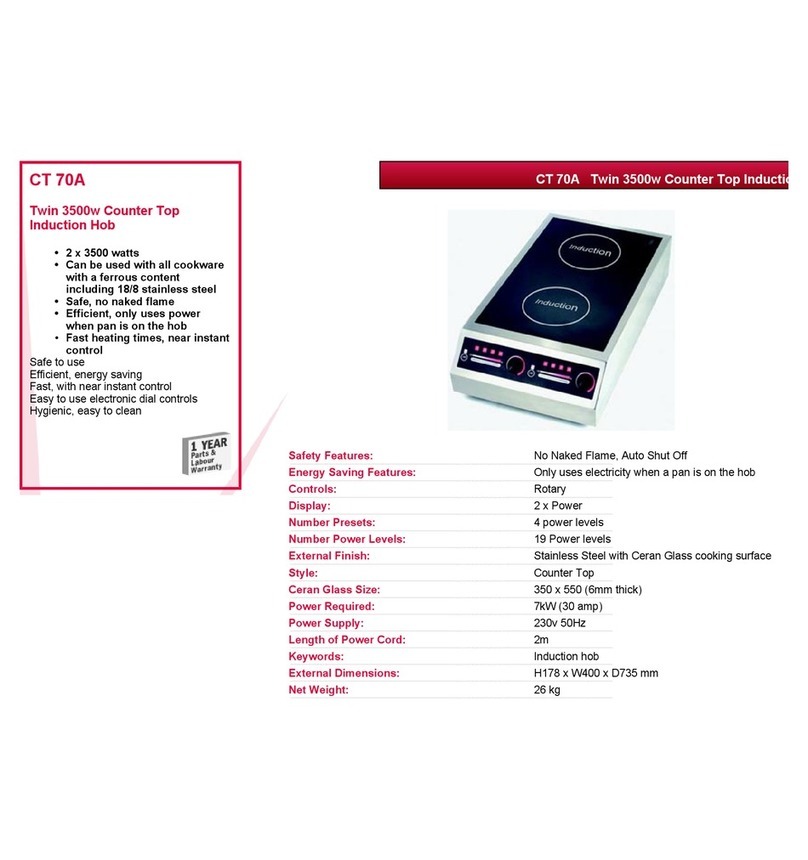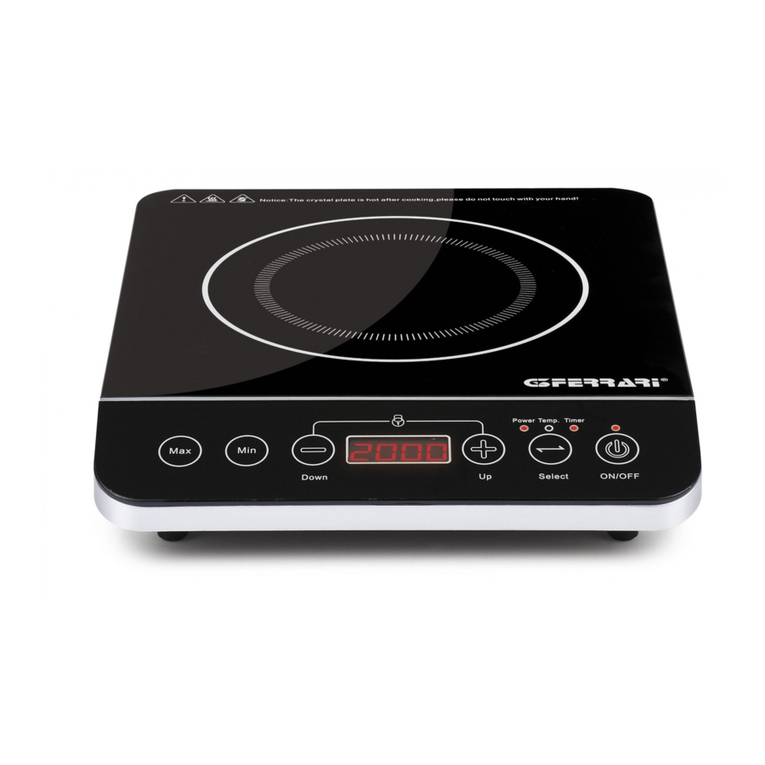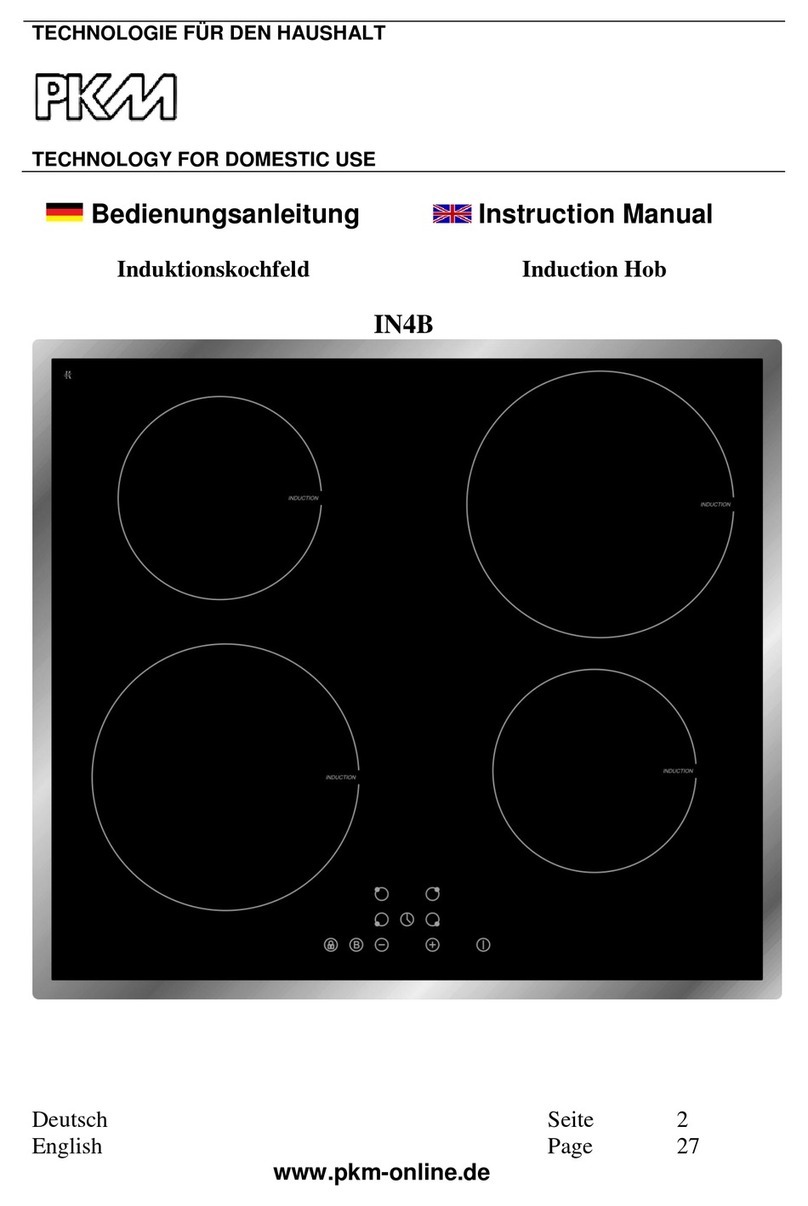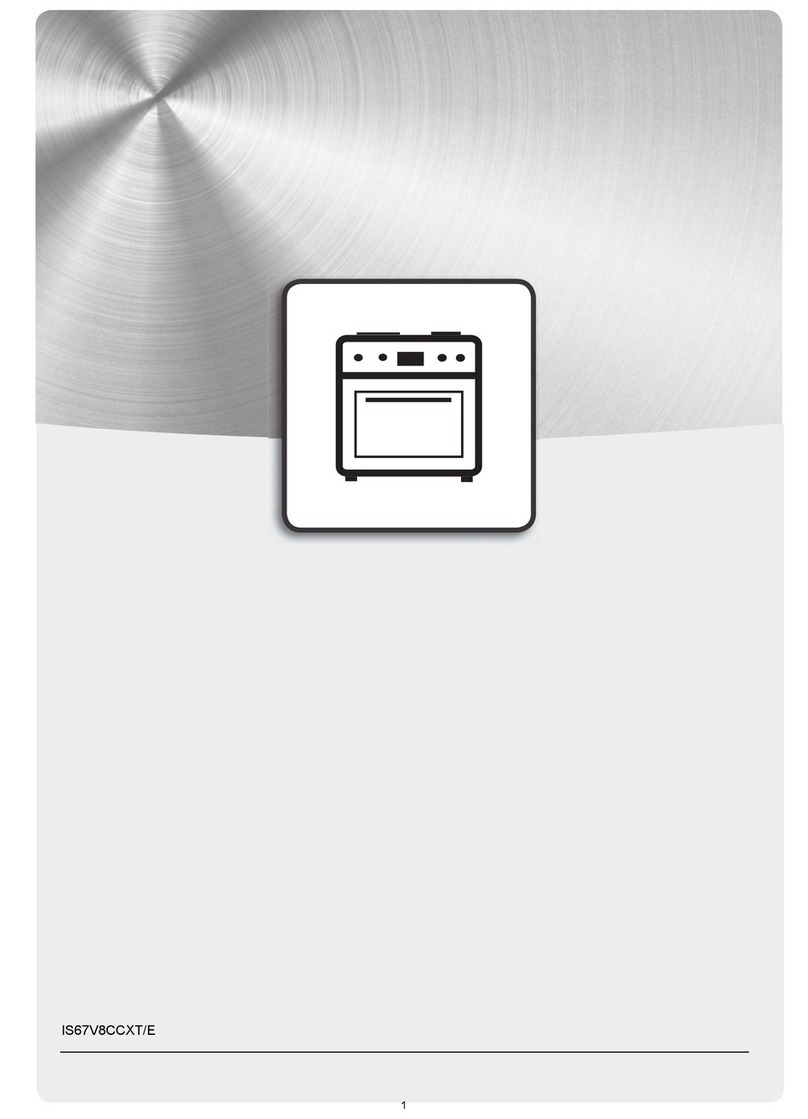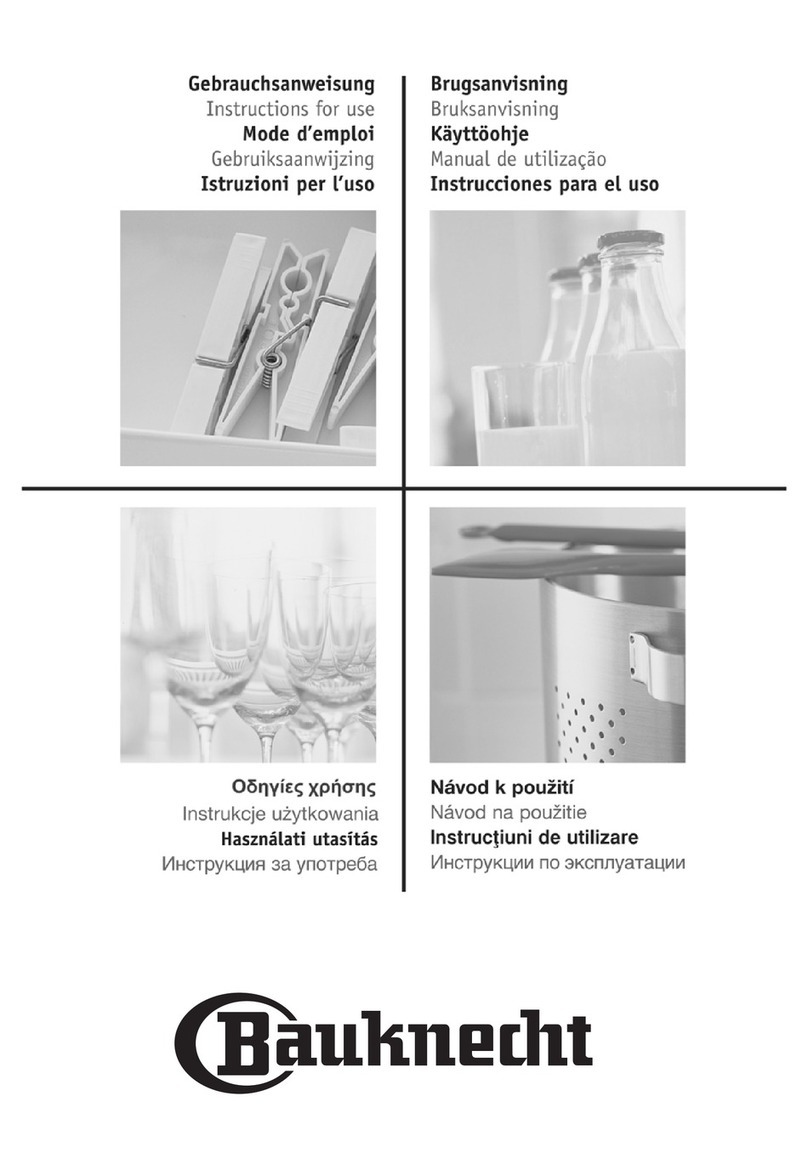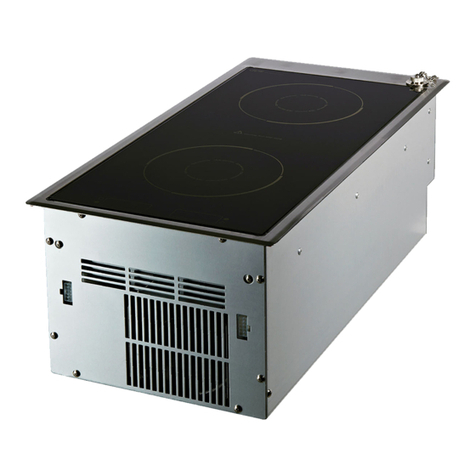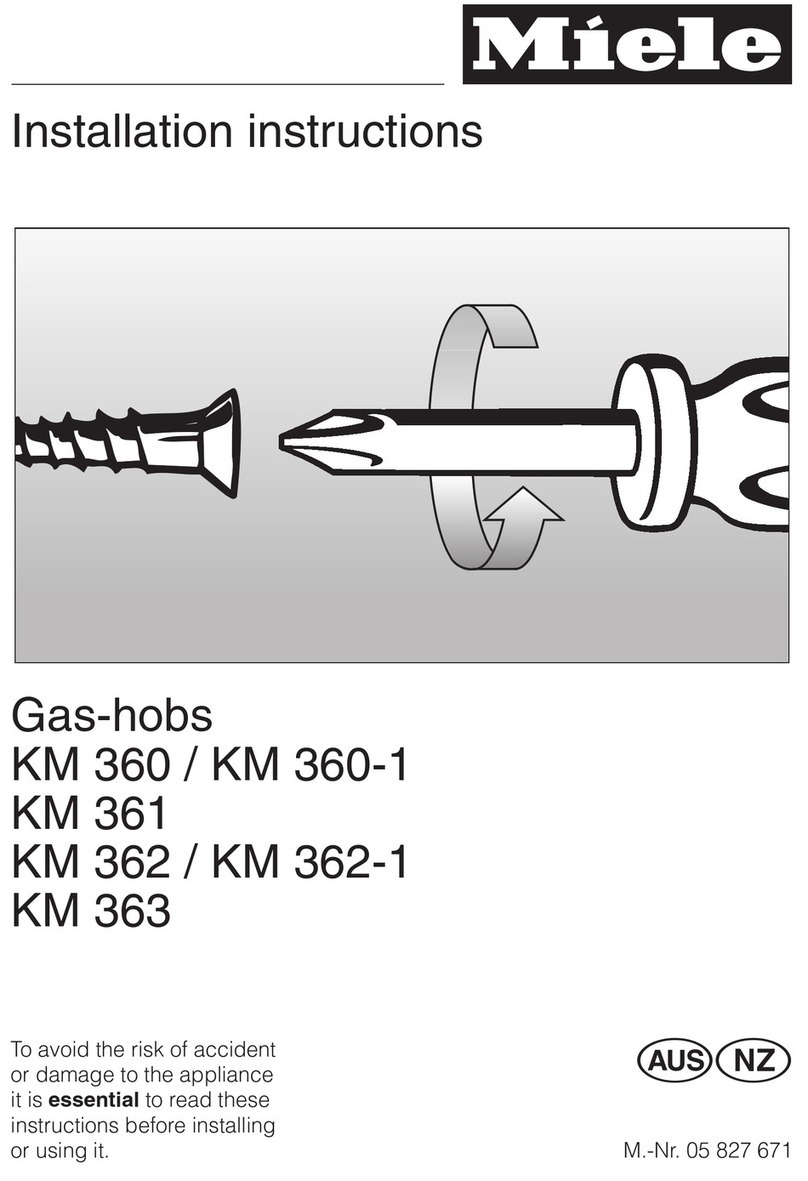14
GB
the hotplate outlines marked on the glass.
•Dry the bases of pots before placing them
on the vitroceramic hob top.
•Never leave plastic objects or utensils, or
aluminium foil on the vitroceramic hob.
•Take care not to scrape the surface of the
hob with pots with sharp edges or corners.
•Do not switch on the hob if there is no pot
on the zone to be used.
•Do not heat plastic recipients on the hob.
•Cooking pots must be made of materials
that will not melt onto the glass of the hob.
•The glass will withstand a certain level of
impact from large recipients with no sharp
edges. Care should be taken to avoid impacts
with small, pointed utensils.
When the halogen heating elements are in
use it is recommended to avoid making eye
contact with them to prevent any injury
being caused.
Take care to prevent sugar or products that
contain sugar from spilling onto the glass
since when hot they could react with the
glass and damage its surface.
To keep the vitroceramic hob in prime condi-
tion only use suitable products and utensils
for cleaning. Vitroceramic hobs should be clea-
ned after every use, when they are warm or
cold. This makes cleaning easier, avoiding
accumulated stains from several uses.
Never use aggressive or abrasive cleaning pro-
ducts that could scratch the surface (see the
table on the next page of common cleaning
products to be used) nor cleaning equipment
using steam as a cleaning agent.
CARE OF THE GLASS SURFACE
When cleaning the hob the degree of staining
must be taken into account, using appropriate
products and utensils in each case.
Light stains
Light stains that have not hardened or stuck to
the surface can be removed with a damp cloth
and a gentle detergent or warm soapy water.
Hardened stains
Stubborn stains and grease can be removed
using special cleaning products for vitrocera-
mic hobs following the manufacturer’s instruc-
tions.
Baked-on stains can be removed using a
scraper with a sharp edge.
Coloured iridescent stains: These are cau-
sed by recipients that have dry grease stains
on the base or by the presence of grease bet-
ween the glass and the pot during cooking.
They can be removed using nickel cleaning
pads and water or a special cleaning product
for vitroceramic surfaces.
Plastic utensils and sugar or sugar-contai-
ning foods that have melted onto the surface
can be removed immediately using a scraper
while still hot.
Cleaning and maintenance
